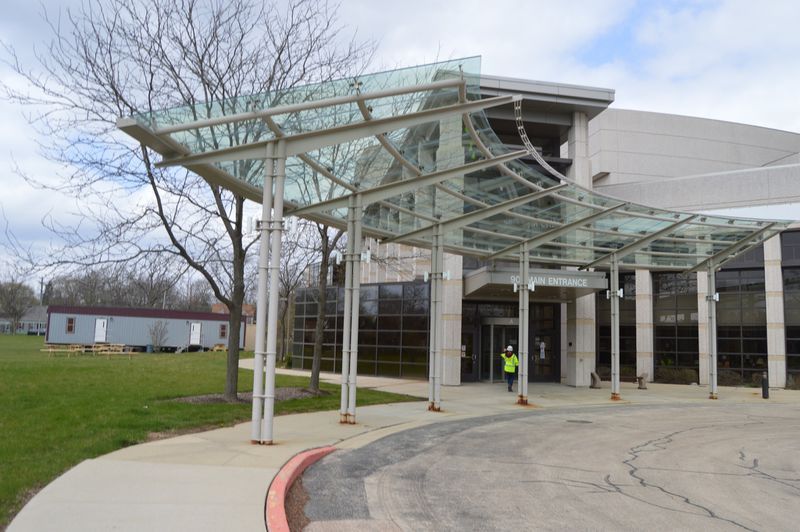At the onset of the COVID-19 pandemic, government health officials had warned that hospitals would be pushed to capacity. Throughout the nation, state and local officials rushed to find sites that could serve as temporary healthcare facilities to help treat the overflow of patients.
In Elgin, IL, the Army Corps of Engineers was called in to convert the old Sherman Hospital building into a new alternate care facility—more than a decade after its initial closure.
[The Integration Guide to AV in a Post-COVID-19 World]
In response to the unprecedented sense of urgency, contractors and laborers worked around the clock to complete the renovation process of Sherman Hospital. The massive 100,000-square foot revamp included three interconnected buildings, and it needed to be completed in less than a month. Unfortunately, project engineers encountered an unforeseen obstacle—a lack of reliable cell signal coverage inside the facility.
The Challenge
Cell signal was weak or nonexistent throughout the Sherman Hospital campus. As is often the case with older hospital buildings, signal could not penetrate the facility’s thick walls. Concrete, brick, and steel are a few of the signal blocking materials that are typically used in the construction of hospitals.
This lack of cell service would be particularly frustrating for doctors, nurses, staff members, patients, and visitors during a pandemic. Signal readings onsite exposed several inadequate coverage issues:
- Only 20 percent of workers had strong cell signal inside the building
- Coverage was just 10 percent near the windows of the facility
- 30 feet into the building, signal was nonexistent
Project engineers explored solutions to improve signal immediately. Healthcare workers needed reliable cell signal to do their jobs effectively, while patients needed to communicate with people outside of the hospital using their cell phones.
The Solution
Salas O’Brien engineers reached out to a WilsonPro representative to discuss how to resolve poor cell signal in the care facility. Together, they determined that the company's Enterprise 4300R was the ideal solution to effectively enhance cell signal on the entire 100,000-square foot campus.
The WilsonPro customized system features:
- Up to 26 dBm in uplink power
- Up to 70 dB max gain
- 4 indoor antenna ports, up to 17 dBm each
- Multi-Tower Targeting Technology
In addition, WilsonPro amplifiers work with all phones and cellular devices on all carriers. Healthcare professionals and patients alike can use their own smartphones and carrier plans for voice and data while in the new temporary facility.
The Results
Following installation of the WilsonPro cellular amplifier, the hospital experienced improved signal immediately, according to the company. The availability of reliable cell service in workers’ offices enabled them to access medical files and care for patients more effectively. Patients were also able to communicate with family members since on-site visits were prohibited due to COVID-19 restrictions.
Before and after site readings indicated a significant improvement in cell signal coverage. While only 20 percent of workers had adequate signal prior to installation of the amplifier, 100 percent of them had strong signal after the system was installed. Near the windows, there was just 10 percent coverage, compared to 100 percent after installation of the device.
In addition to outstanding site reading results throughout the building, the time-sensitive project, from design to commissioning, was completed in just two weeks. The facility was up and running quickly, enabling workers to provide patient care as needed during the COVID-19 crisis.










